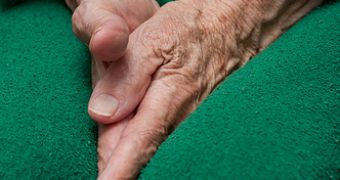Christmas is coming next week, and most hospital patients can't wait to go home, and be with their loved ones, but this is not the case for everybody.
Ironically, old people that are in good health but suffer from something else, try by any means to stay in a hospital for this time of the year – their suffering is loneliness!
Doctor Ishani Kar-Purkayastha, Academic Clinical Fellow Public Health Medicine, Health Protection Agency, wrote an essay on the epidemic of loneliness that is present every year, during holiday season, entitled 'An epidemic of loneliness'.
When she was a junior doctor, Ishani Kar-Purkayastha worked in a hospital ward, so based on her experience during the holidays there, she built a character for her essay, published online in the medical journal The Lancet on Thursday (Dec. 16).
The name of this character is Doris Rafferty, she is an 82-year-old widow and she represents many of the hospital's patients.
The essay says that Doris comes in the ward in London weeks before Christmas, complaining of a fluttering in her chest.
She prolongs her stay after complaining of pain in her hip, then her arm, the problem is that the woman is in very good health.
During a visit to her room, the doctor learns that she is in fact alone, her husband being dead for 20 years already, and her children living abroad.
She is not sick but she doesn't want to be alone for the holidays, saying that “there are so many hours in the day.”
For Christmas, the only ones who remain in the hospital are those too sick to go home, and a few others join them – those who are very sick and those who simply cannot handle holiday festivities.
These last are mostly old people, grandmothers and grandfathers, “men and women who have lived a lot and loved a lot,” Kar-Purkayastha writes.
“Men and women who are not yet done with being ferocious and bright but for whom time now stands empty as they wait in homes full of silence; their only misunderstanding to have lived to an age when they are no longer coveted by a society addicted to youth.”
Doris represents people the doctor has seen several years ago, but this kind of loneliness is not the only one encountered in hospitals.
And even this feeling is mostly experienced by older people, there are younger people who feel lonely too, except the reasons are often different.
Kar-Purkayastha said that in her “experience, older people are more stoical and tend to want not to be 'too much trouble' and as a result their needs may unintentionally become neglected.”
Michael Kraus, a postdoctoral researcher in health psychology at the University of California, San Francisco says that “isolation, like Rafferty's, violates our nature as social animals.
“Humans have evolved such that our social connections form the foundations of our culture and shape who we are as individuals,” he told LiveScience.
“Being away from such connections – particularly during a time of year where our friends and family are most important – runs against our basic biological needs, and can be extraordinarily painful for someone at the end of life.”

 14 DAY TRIAL //
14 DAY TRIAL //